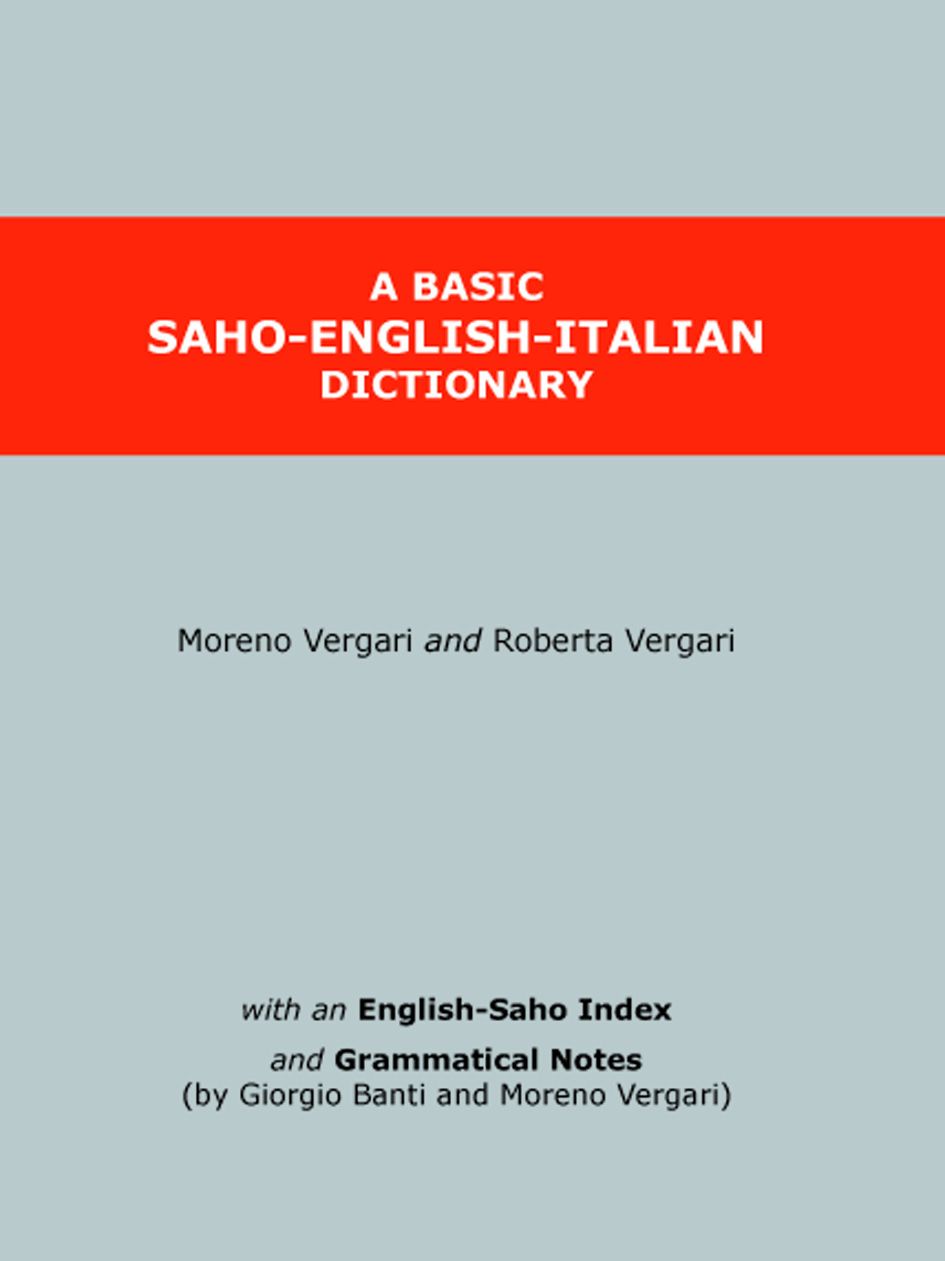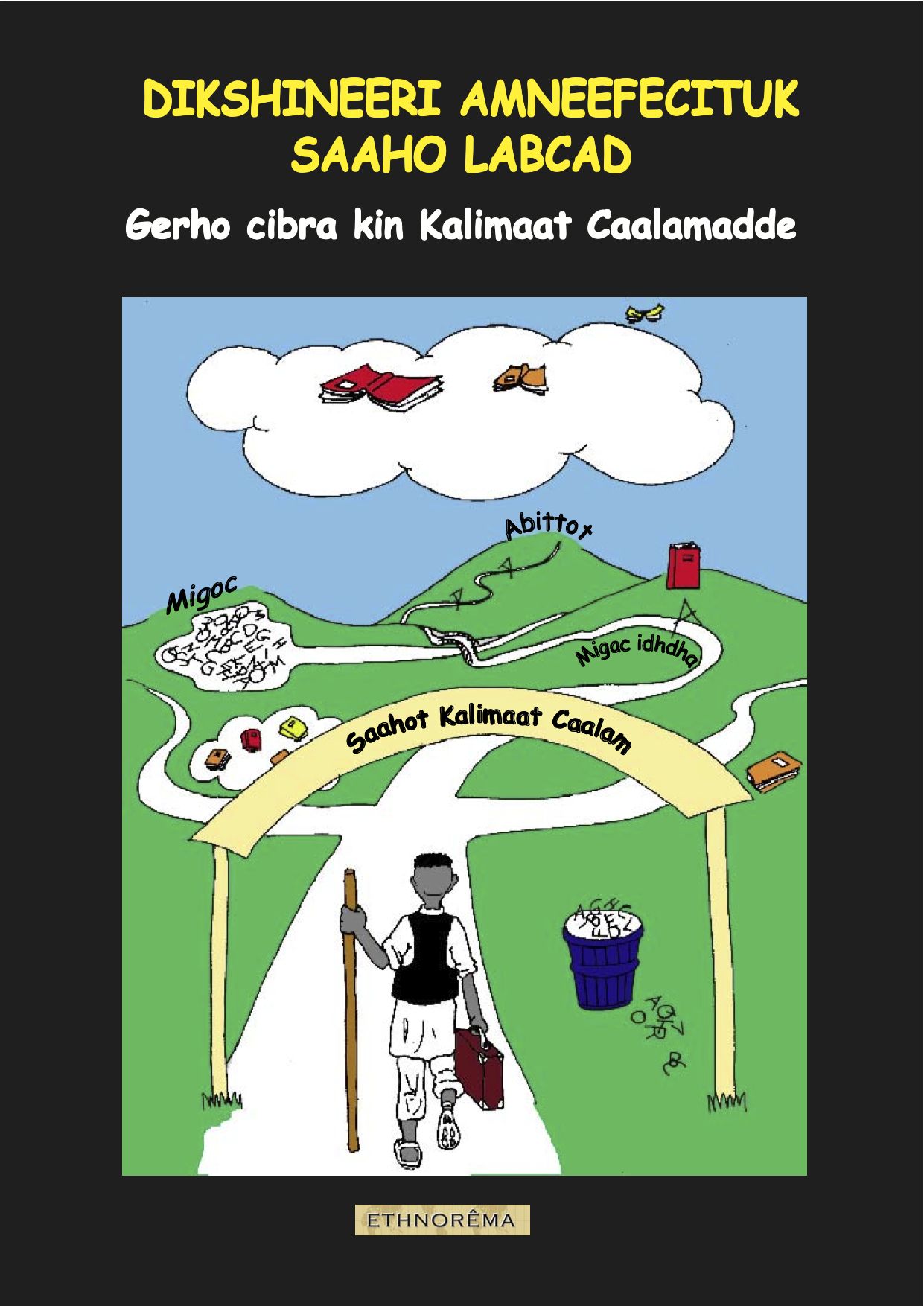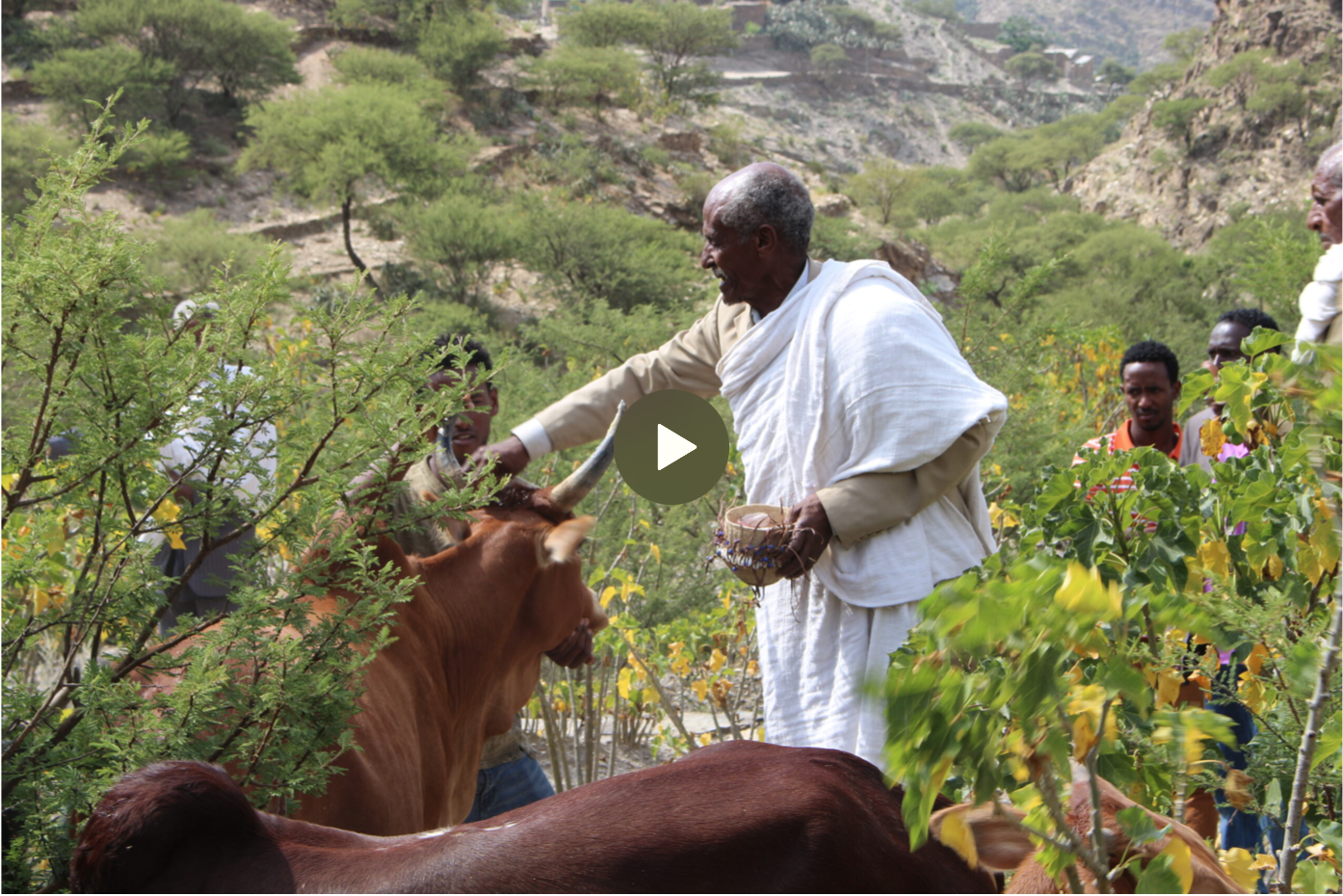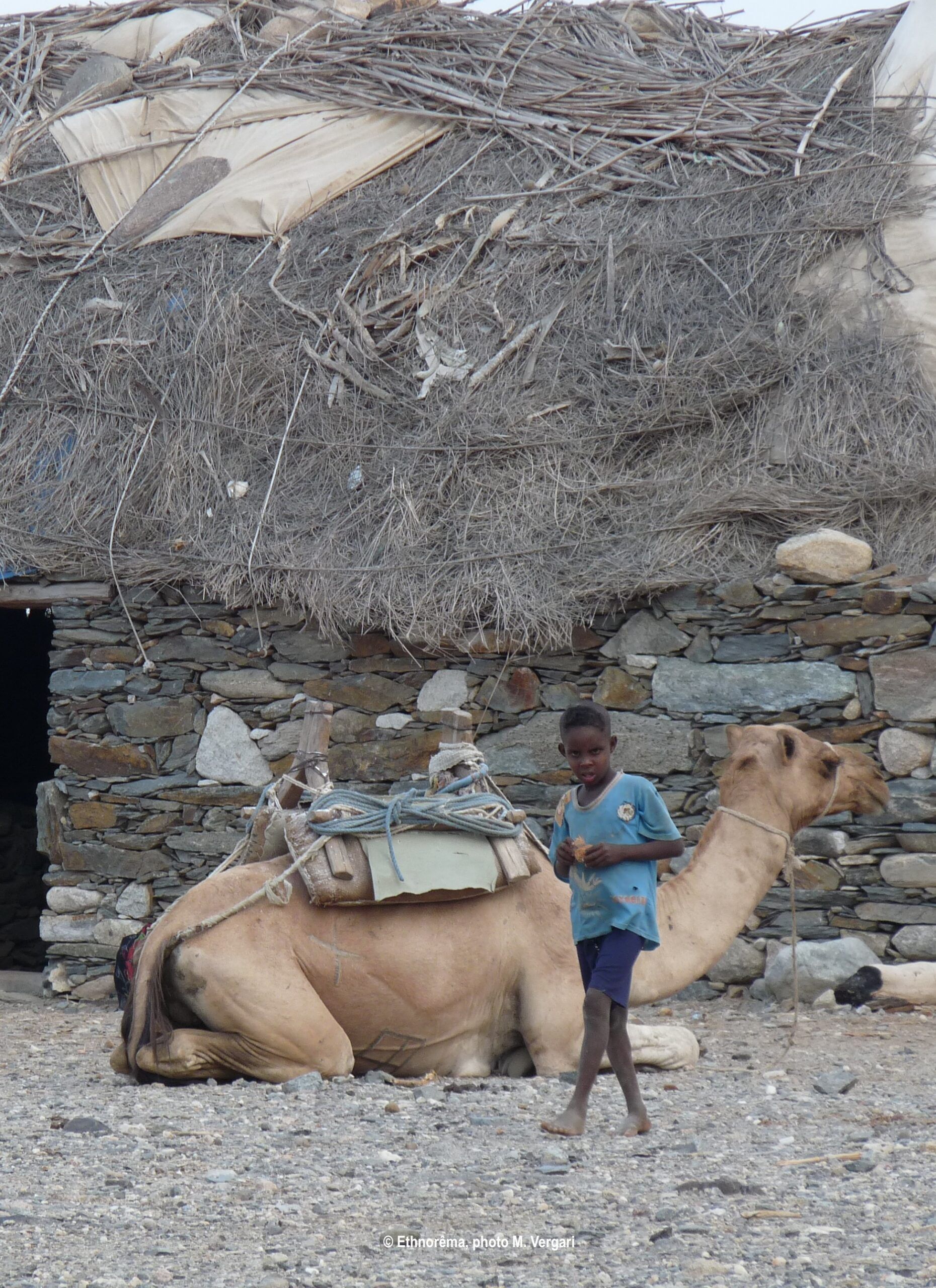
Saho Project (Eritrea / Ethiopia).
Atlas of the Traditional Material Culture of the Saho (ATMCS)
In 2007 Ethnorêma-ODV, in cooperation with the department of Asia, Africa and the Mediterranean of the University of Naples “L’Orientale” and the department of Mediterranean Asian and African studies of “Ca’ Foscari” University of Venice, started a project to document the traditional material culture of Eritrea’s Saho and Ethiopia’s Irob people (ATMCS), their respective terminology and dialect variations.
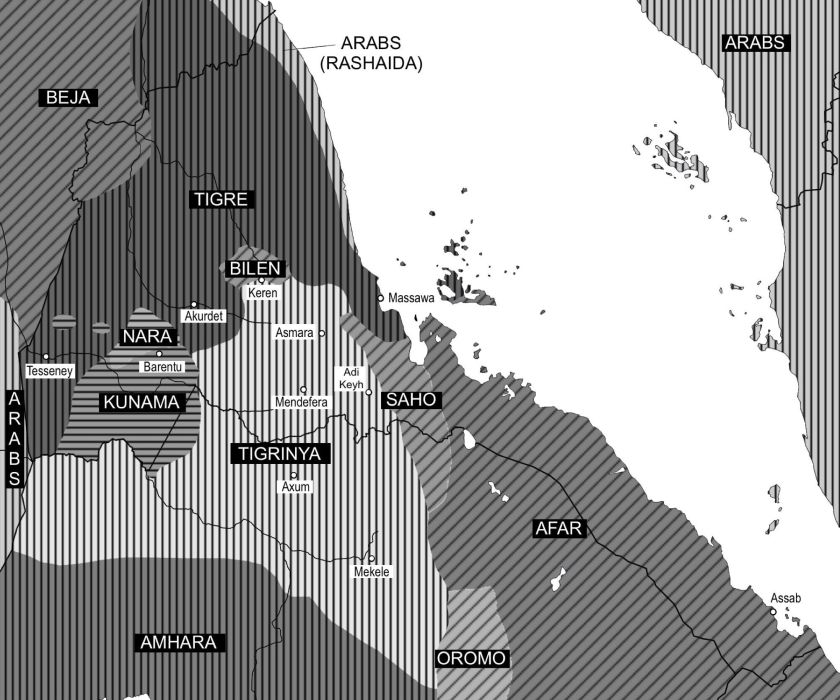
Approximate distribution of ethnic groups and their languages in Eritrea and neighbouring regions (adapted and modified from: European Asylum Support Office (2015) Eritrea Country Focus, p. 13. Luxembourg: Publications Office of the European Union).

Project details
-
Location of operationSee map
-
Year2007-ongoing
The on-site field trips of 2008, 2009, 2010 and 2011 were partially co-financed by the Italian Institute of Africa and the Orient (IsIAO), the Italian Ministry of Foreign Affairs, and from COFIN funds of the Italian Minstry of Universities and Research. From 2013 to 2016, the ATMCS project was part of the FIRB’s (Italian fund for investment in basic research) “Linguistic and Cultural Transition Areas in Africa” project (AtrA), financed by the Italian Ministry for Universities and Research (MIUR).
Moreno Vergari, Roberta Zago, Ahmedsaad Mohammed Omer (Ethnorêma), Giorgio Banti (University of Naples “L’Orientale”, Ethnorêma), Gianni Dore (“Ca’ Foscari” University of Venice, Ethnorêma)
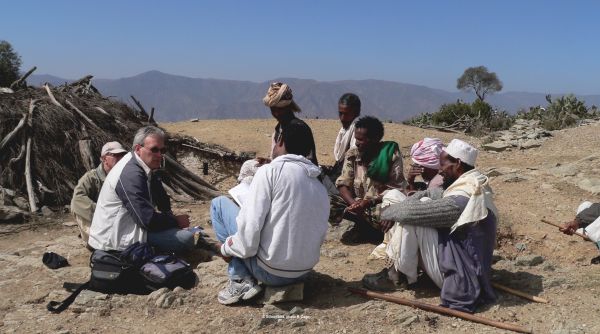
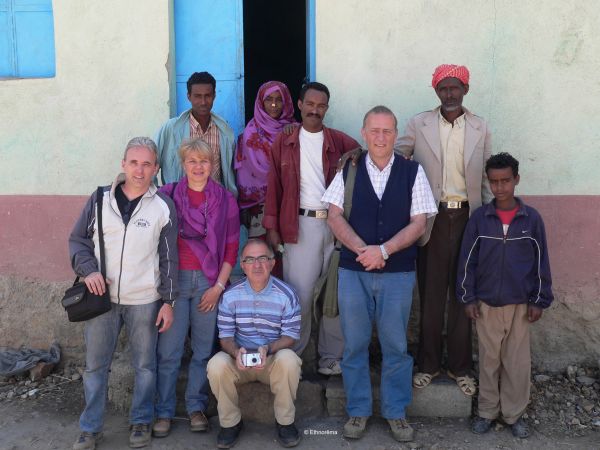
Above: pictures of team members in Eritrea.
Right: postcard of Saho village May Faaro (Eritrea), picture taken in 1903 by Alessandro Comini.
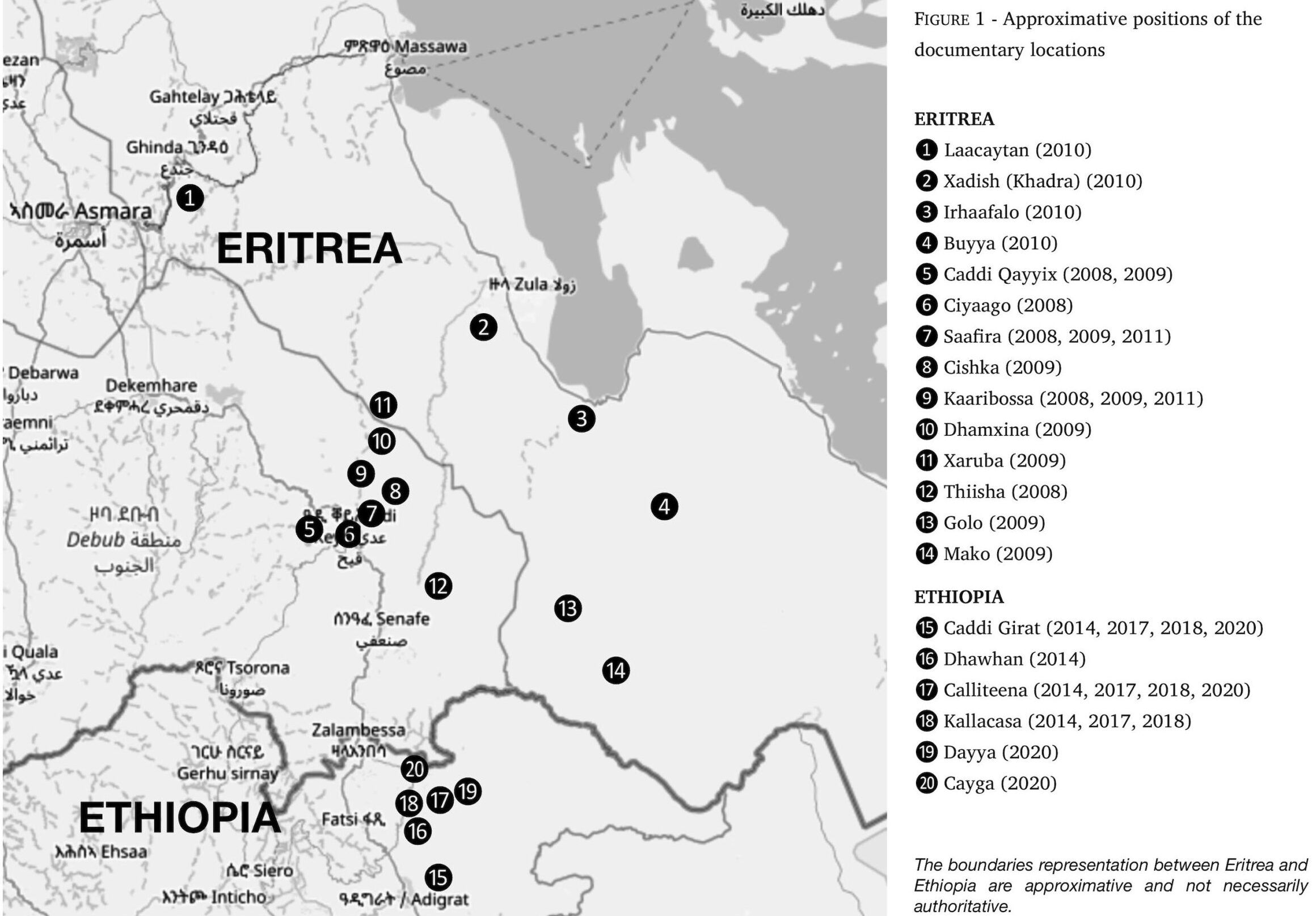
Research locations of on-site operations in 2008, 2009, 2010, 2011 (Eritrea),
2014, 2017, 2018, 2020 (Ethiopia).
During field research over 50 Saho speakers were interviewed about the following seven cycles of activity:
– cultivation of various indigenous plants;
– zootechnics;
– apiculture and harvesting honey;
– traditional construction (houses, fences etc.) and construction techniques;
– cooking; diet (acquisition, processing, cooking, consumption and social context);
– food containers and other objects;
– rugs and weaving.
The different locations in Eritrea and Ethiopia were chosen to best represent the different varieties of the Saho dialects and the aforementioned activity cycles. Designated questionnaires were submitted to locals in each research location with the aim of gathering data regarding:
– tools used to perform said activities;
– how these tools are used;
– who builds these tools and how;
– technical knowledge and transmission of knowledge;
– popular belief, stories and proverbs connected to said tools;
– dialect variation.
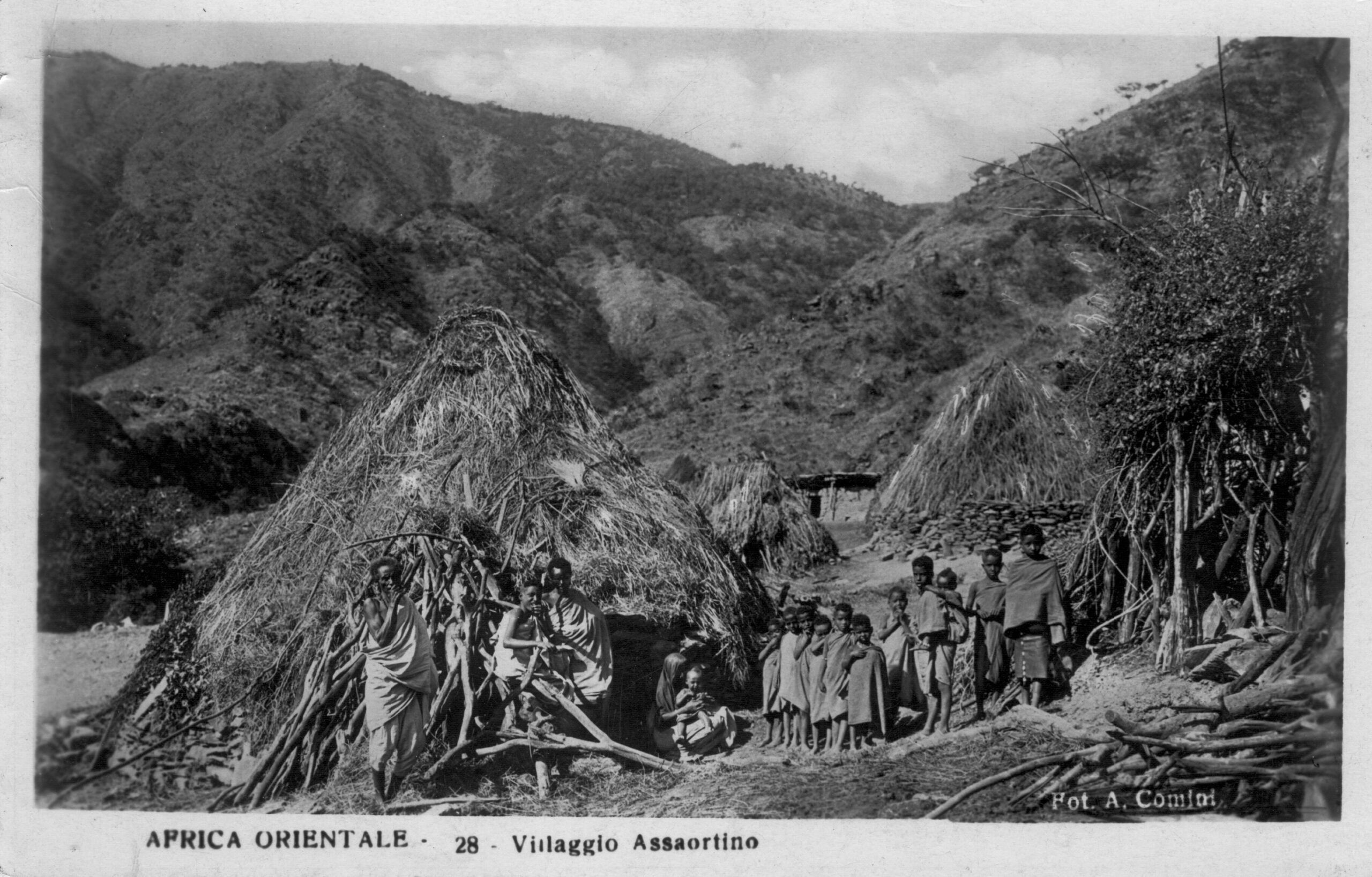
Publications of the ATMCS team
Here listed are some publications by team members of the ATMCS project in relation to the Saho people and their language.
AXMADSACAD MAXAMMAD CUMAR (ed.) (2008a) Xanlake vol. 1. Caddi Qayyix: (mimeographed).
— (2008b) Xanlake vol. 2. Caddi Qayyix: (mimeographed).
— (2008c) Xanlake vol. 3. Caddi Qayyix: (mimeographed).
— (2009) Xanlake vol. 4. Caddi Qayyix: (mimeographed).
AXMADSACAD MAXAMMAD CUMAR (2016) Figurative Language in Saho marriage customs, M.A. Thesis, Redcliffe College, Center of Linguistics and Translation & Literacy.
BANTI, Giorgio (1987) “Evidence for a second type of suffix conjugation in Cushitic”, in Jungraithmayr, H., W. Müller (eds.) Proceedings of the 4th International Hamito-Semitic Congress. 123-168. Amsterdam, Philadelphia: John Benjamins Publishing Co.
— (1988) “’Adjectives’ in East Cushitic”, in Bechhaus-Gerst, M., F. Serzisko (eds.) Cushitic Omotic. 205-259. Hamburg: Helmut Buske Verlag.
— (2001) “New perspectives on the Cushitic verbal system”. In A. Simpson (ed.) Proceedings of the 27th Annual Meeting of the Berkeley Linguistic Society – Special Session on Afroasiatic Languages, pp. 1-48. Berkeley: Berkeley Linguistics Society.
— (2004) “Comparative notes on the Cushitic imperative”. In Bogdan Burtea, Josef Tropper and Helen Younansardaroud (eds.), Studia semitica et semitohamitica – Festschrift für Rainer M. Voigt anläßlich seines 60. Geburtstages am 17. Januar 2004. Pp. 55-91. Münster: Ugarit-Verlag.
— (2009) Introduction, in Ethnorêma 5:1-10 (Special issue on the Atlas of the Traditional Material Culture of the Saho [ATMCS]).
— (2010) “Remarks on the typology of converbs and their functional equivalents in East Cushitic”. In: Voellmin, S., Azeb Amha, Rapold Ch., e S. Zaugg-Coretti S. Converbs, medial verbs, clause chaining and related issues (Frankfurter Afrikanistische Blaetter 19 [2007]): 31-80. Colonia: Ruediger Koeppe.
— (2011) “Oral literature”. In Uhlig, S., ed., Encyclopaedia Aethiopica, Vol. 4: 38b-42a. Wiesbaden: Harrassowitz.
BANTI, Giorgio, VERGARI Moreno (2005) “A sketch of the Saho grammar”, in Journal of Eritrean Studies 4:100-31.
— (2008) “Italianismi lessicali in saho”, in Ethnorêma 4:67-93.
— (2010a) “Sāho language”, in Uhlig, S. (ed.) Encyclopaedia Aethiopica, 4:468b-471a. Wiesbaden: Harrassowitz.
— (2010b) “The Saho of Eritrea and the Documentation of their Language and Cultural Heritage”, in Annali dell’Università degli studi di Napoli “L’Orientale”, 70/1-4:83-108.
— (2017) “Aspects of Saho Dialectology”, in Quaderni di Vicino Oriente, XII:65-81.
— (forthcoming) “Saho Language”, in Bedilu Wakjira, Meyer, R., Zelealem Leyew (eds.) Oxford Handbook of Ethiopian Languages.
BANTI, Giorgio, AXMASACAD MAXAMMAD CUMAR (2009) “A Few Saho Texts about Bees and Honey”, in Ethnorêma 5:89-108 (Special issue on the Atlas of the Traditional Material Culture of the Saho [ATMCS]).
DORE, Gianni (2004) “Tassonomia pastorale dei Saho ‘Asaorta’: Materiali coloniali”, in Etnolinguistica e Zoonomia. Le denominazioni popolari degli animali, 193-221.
— (2006) “Per un repertorio degli stili alimentari nell’altopiano etiopico. Note su commensalità, divisione, spartizione e gerarchie sociali”, in Etnorêma 2:1-25.
— (2007) “Honey. Concept and Role of Honey in Ethiopian Culture”, in Uhlig, S. (ed.) Encyclopaedia Aethiopica, 3:65b-66ab. Wiesbaden: Harrassowitz.
— (2009a) “ʽC’è l’Assaorta che ci aspetta…’. Geografi ed etnografi italiani tra i Saho dell’Eritrea”, in Ethnorêma 5:11-28 (Special issue on the Atlas of the Taditional Material Culture of the Saho [ATMCS]).
— (2009b) “Etnografia del miele nelle fonti coloniali italiane sull’Eritrea e Etiopia”, in Ethnorêma 5:51-60
— (2015) “Rapporti socio-produttivi tra agricoltori tigrini e pastori saho d’Eritrea. L’evoluzione dell’abitazione saho dalla daasa alla naxsa”, nel volume Cose da prendere sul serio. Le antropologie di Giulio Angioni, a cura di F. Bachis e A. M. Pusceddu, Cagliari, Ed. Il Maestrale.
DORE, Gianni, VERGARI, Moreno (2016) “Identità, ibridazione ed evoluzione dell’abitare tra i Saho di Eritrea e Etiopia”, in MICHELI Ilaria (ed.) Materialità and Identity. Selected papers from the proceedings of the ATrA Conferences of Naples and Turin 2015, 1:93-123. Trieste: EUT.
— (2018) “Gendered spaces, grindstones and baking among the Saho-speaking communities”, in Rassegna di Studi Etiopici, 3a Serie (XLIX), 2:41-82.
VERGARI, Moreno (2005) Dikshineeri amneefecituk Saaho labcad. Gerho cibra kin Kalimaat Caalamadde [Practise Saho while using the dictionary. An amazing voyage in the World of Words]. Castelnuovo Scrivia and Asmara: Sabur Printing Services.
— (2008) “How to express “Adjectives” in Saho”, in TAKÁCS, Gabor (ed.) Semito-Hamitic Festschrift for A.B. Dolgopolsky and H. Jungraithmayr. Berlin: Dietrich Reimer Verlag, 337-346.
— (2021) “Il contributo di Carlo Conti Rossini alla conoscenza dei Saho di Eritrea ed Etiopia. Note tra storia, etnografia e linguistica”, in Rassegna di Studi Etiopici, 3a Serie (LII), 5: 93-112.
– (2022) (ed. – with the contributions of Ahmedsaad Mohammed Omer, Giorgio Banti, Gianni Dore, Moreno Vergari, and Roberta Vergari) Housing and dwelling among the Saho-speaking communities of Eritrea and Ethiopia. History, anthropology and lexicography. ATrA 9. Trieste: EUT.
VERGARI, Moreno, VERGARI, Roberta (2003) A basic Saho-English-Italian dictionary. Asmara: : Sabur Printing Services.
— (2009) “An encyclopedic lexicon of the Saho traditional knowledge on beekeeping”, in Ethnorêma 5:61-88.
Several of these publications can be downloaded from the website SahoArchive.
See also the Academia page of Giorgio Banti, Gianni Dore e Moreno Vergari.
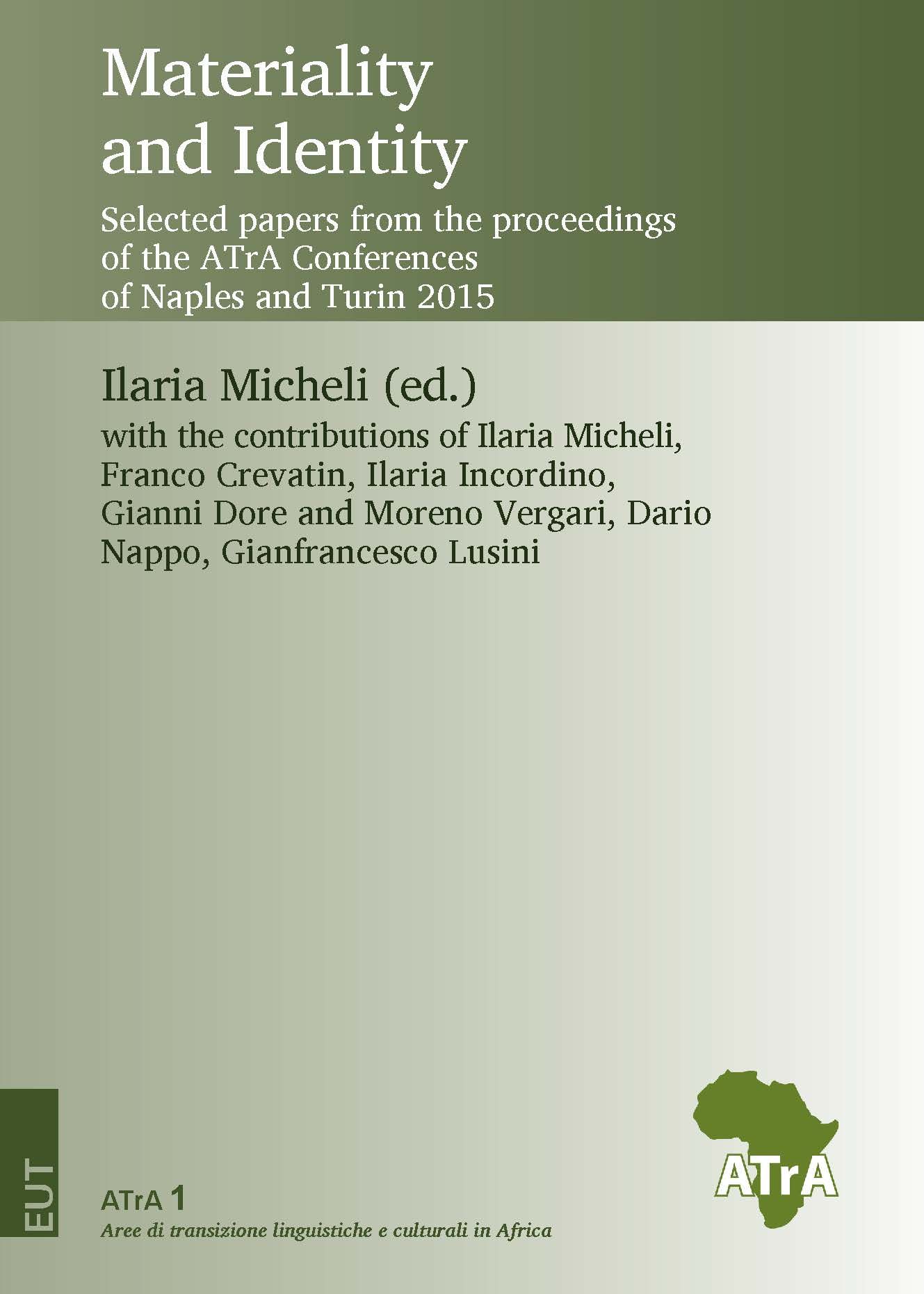
ATrA African Transitions – Linguistics and Cultural Transition Areas in Africa
From May 2013 to February 2016 the ATMCS project was part of FIRB’s project “Linguistic and Cultural Transition Areas in Africa” (ATrA), financed by the Ministry of Education, University and Research (MUIR). Ethnorêma has worked in conjunction with the University of Trieste, the leading force of the project which has also involved linguists, anthropologists and archaeologists of the Naples University “L’Orientale” and the University of Turin.
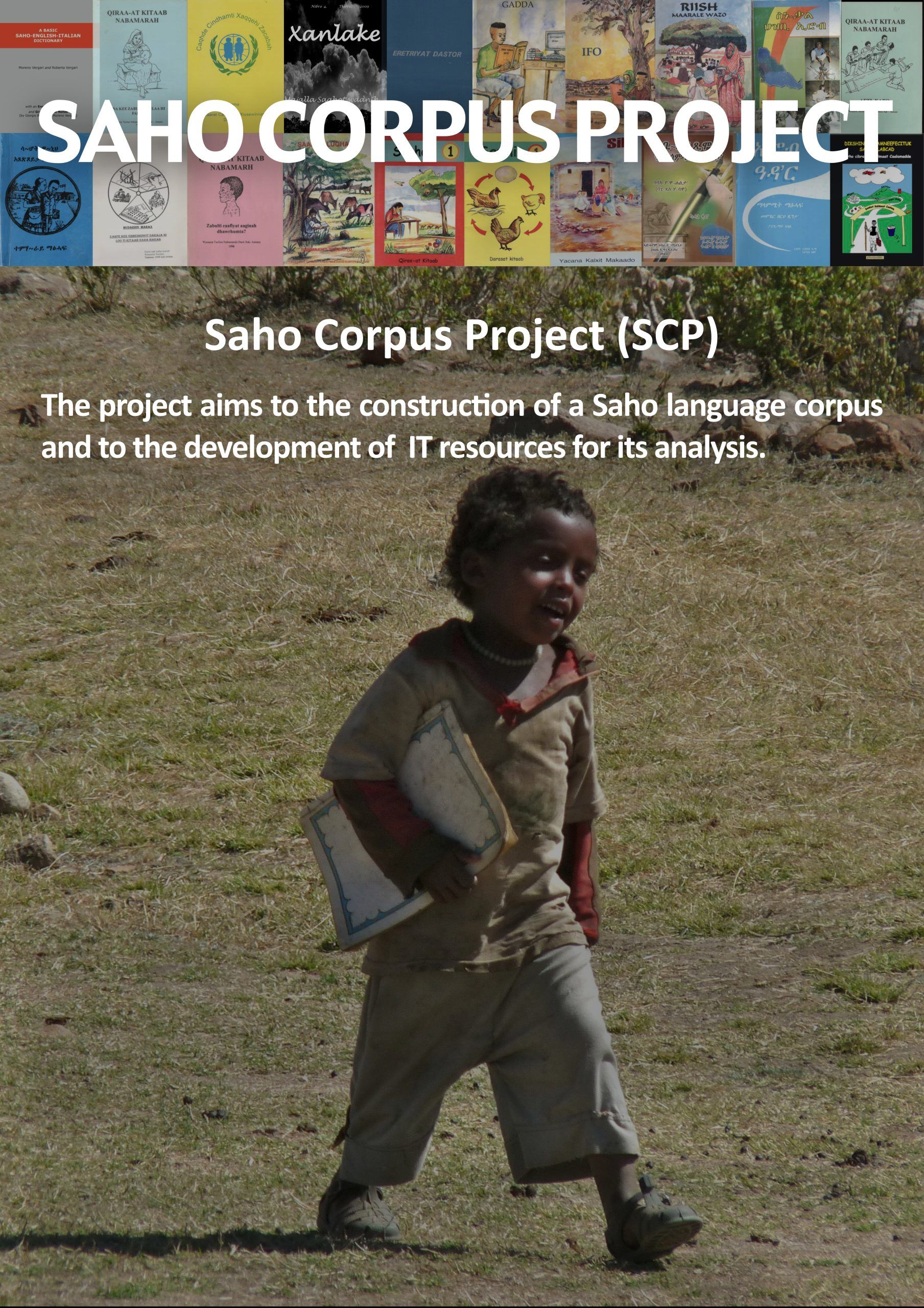
Saho Corpus Project (SCP)
The project aims to the construction of a Saho language corpus and to the development of IT resources for its analysis.
Project designed and directed by Jama Musse Jama (Redsea Cultural Foundation), author of the Somali Corpus Project (www.somalicorpus.com/index.php), with the collaboration of Ahmedsaad Mohammed Omer (Saahot Makaado, Ethnorêma); Giorgio Banti (University of Naples “L’Orientale”, Ethnorêma), and Moreno Vergari (Ethnorêma).
See the presentation of the SCP done by Jama Musse Jama at the Saho Cultural Association in London (22 May 2022):
